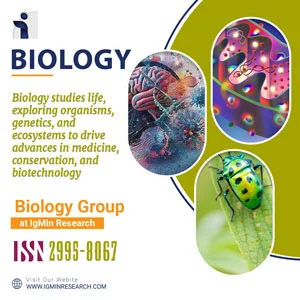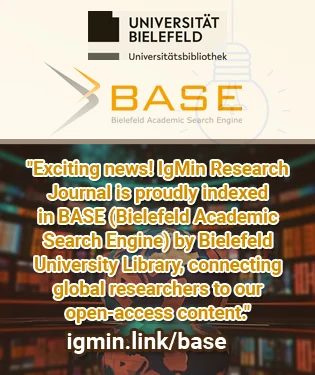Open Access Policy refers to a set of principles and guidelines aimed at providing unrestricted access to scholarly research and literature. It promotes the free availability and unrestricted use of research outputs, enabling researchers, students, and the general public to access, read, download, and distribute scholarly articles without financial or legal barriers. In this response, I will provide you with an overview of the history and latest resolutions related to Open Access Policy.
About
Explore Top Biology Journals for Submission
Are you a researcher looking for Biology Journals for Submission? At IgMin Research, we provide a seamless platform for scholars, scientists, and academicians to submit Biology manuscripts in a wide array of biological disciplines. Our journals follow a transparent peer-review process and are indexed in leading databases, ensuring your research gains the visibility it deserves.
Why Choose Our Open Access Biology Journals?
Publishing in Open Access Biology Journals increases your article's reach, allowing global access without subscription barriers. We support innovation by providing a rapid and rigorous review system.
Key benefits include:
-
Fast-track peer review and publication
-
No hidden submission charges
-
Expert editorial support
-
Worldwide visibility and accessibility
-
DOI and indexing support
How to Submit Biology Manuscript
We’ve simplified the process to submit Biology manuscripts. Our step-by-step manuscript guidelines help you prepare your paper for a successful submission.
Whether you're an early-career researcher or a seasoned academic, join our community of global contributors and share your breakthrough discoveries with the world.
Editors
Biology Group (2)
Open Access Policy refers to a set of principles and guidelines aimed at providing unrestricted access to scholarly research and literature. It promotes the free availability and unrestricted use of research outputs, enabling researchers, students, and the general public to access, read, download, and distribute scholarly articles without financial or legal barriers. In this response, I will provide you with an overview of the history and latest resolutions related to Open Access Policy.
General Science Group (1)
Open Access Policy refers to a set of principles and guidelines aimed at providing unrestricted access to scholarly research and literature. It promotes the free availability and unrestricted use of research outputs, enabling researchers, students, and the general public to access, read, download, and distribute scholarly articles without financial or legal barriers. In this response, I will provide you with an overview of the history and latest resolutions related to Open Access Policy.

Why publish with us?
Global Visibility – Indexed in major databases
Fast Peer Review – Decision within 14–21 days
Open Access – Maximize readership and citation
Multidisciplinary Scope – Biology, Medicine and Engineering
Editorial Board Excellence – Global experts involved
University Library Indexing – Via OCLC
Permanent Archiving – CrossRef DOI
APC – Affordable APCs with discounts
Citation – High Citation Potential
Which articles are now trending?
Research Articles
- Prevalence of Non-specific Low Back Pain Among Chinese Healthcare Workers (Surgeons and Surgical Nurses): A Multi-Center Survey Study
- Influence of Polycarboxylate Superplasticizer on the Calorimetric and Physicomechanical Properties of Mortar
- Application of Virtual Reality (VR) in Facility Management Competency-based Training (CBT) in the Era of Industrie 5.0
- From Traditionalism to Algorithms: Embracing Artificial Intelligence for Effective University Teaching and Learning
- Physical Activity and Lifestyle of Female Students of the Faculty of Health Sciences University of Applied Sciences in Tarnów (Poland)
- Assessing Bee (Hymenoptera, Apoidea, Anthophila) Diversity and Floral Preference in Two Habitats in the Iberian Peninsula
Advertisement










